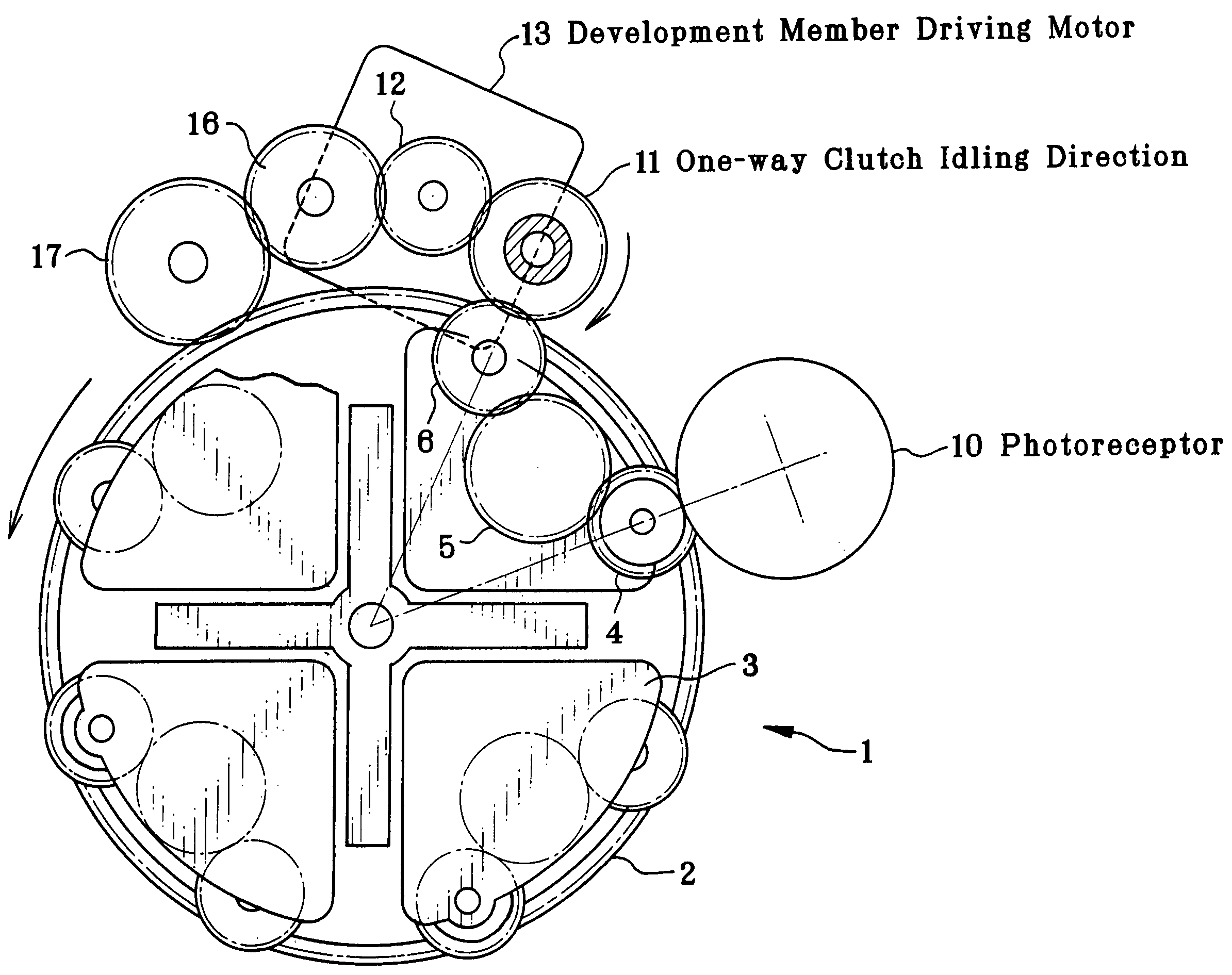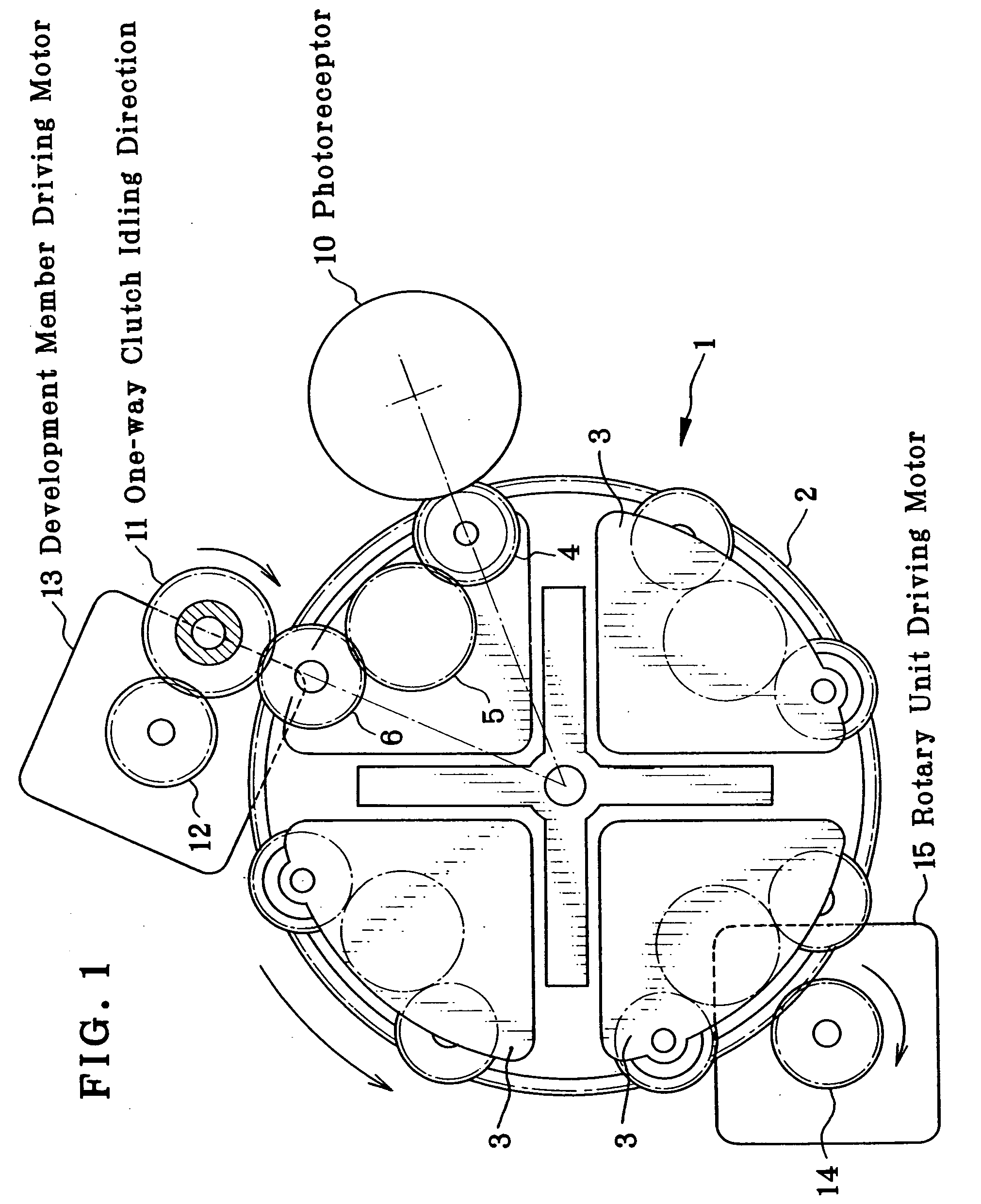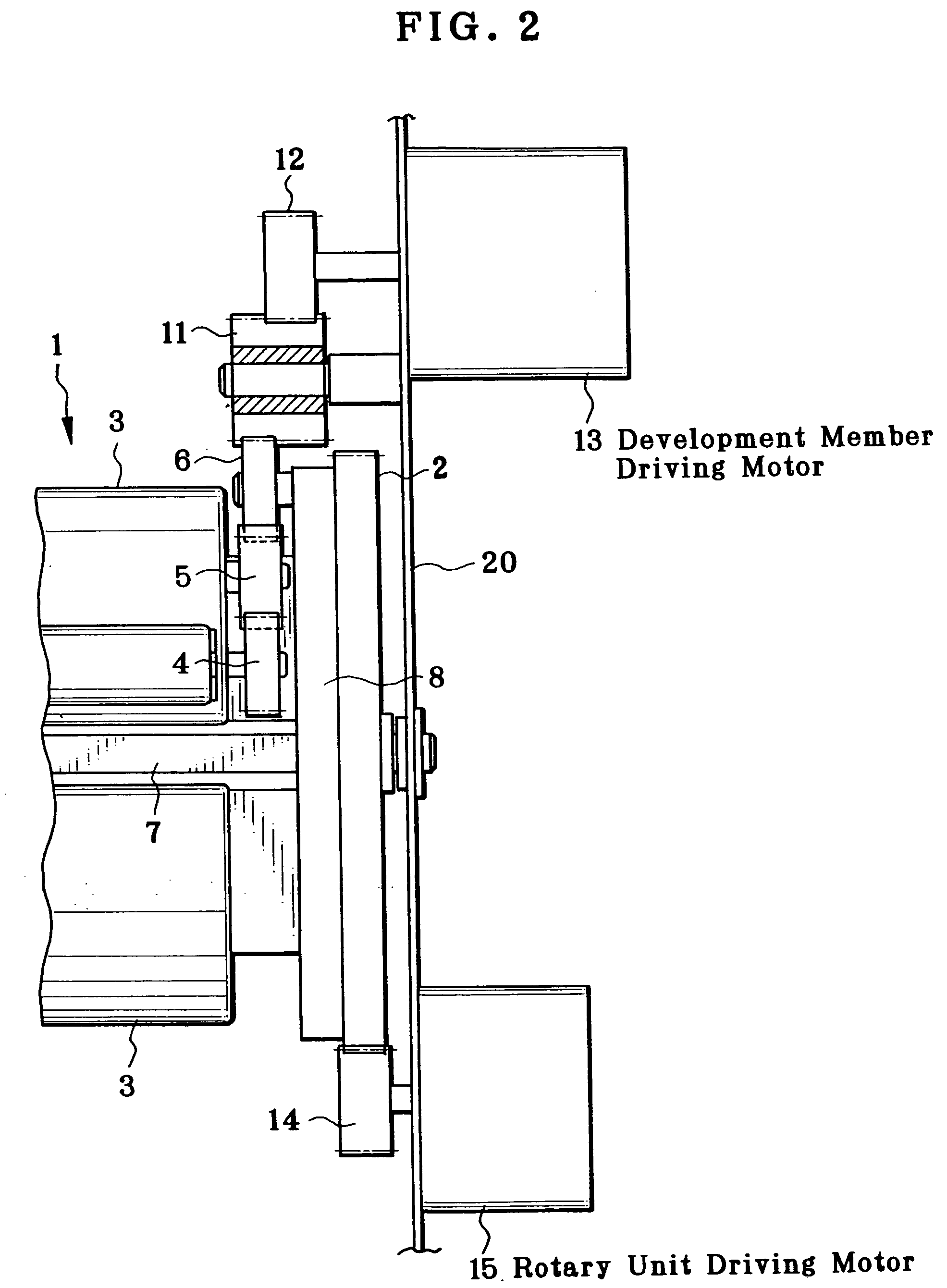Rotary developing device
a developing device and rotary technology, applied in the direction of instruments, electrographic process equipment, optics, etc., can solve the problems of increasing the load on the cpu, restricting the entire operation of the apparatus, and poor positioning accuracy of dc brushless motors, so as to reduce vibration, damp vibration, and transfer error
- Summary
- Abstract
- Description
- Claims
- Application Information
AI Technical Summary
Benefits of technology
Problems solved by technology
Method used
Image
Examples
Embodiment Construction
[0043] Hereinafter, embodiments of the present invention will be described with reference to the drawings. FIG. 1 is an illustration showing an embodiment of a rotary developing device according to the present invention, FIG. 2 is a side view of a gear train section of the rotary developing device. In these drawings, numeral 1 designates a rotary developing unit, 2 designates a rotary input gear, 3 designates each development cartridge, 4 designates a development roller gear, 5 designates each idle gear, 6 designates a development input gear, 10 designates a photoreceptor, 11 designates a development member driving gear, 12 designates a motor pinion, 13 designates a development member driving motor, 14 designates a motor pinion, and 15 designates a rotary unit driving motor.
[0044] In FIG. 1, the rotary developing unit 1 has a substantially cylindrical shape and is provided around its periphery with a plurality of development cartridges 3 to develop latent images formed on a latent ...
PUM
 Login to View More
Login to View More Abstract
Description
Claims
Application Information
 Login to View More
Login to View More - R&D
- Intellectual Property
- Life Sciences
- Materials
- Tech Scout
- Unparalleled Data Quality
- Higher Quality Content
- 60% Fewer Hallucinations
Browse by: Latest US Patents, China's latest patents, Technical Efficacy Thesaurus, Application Domain, Technology Topic, Popular Technical Reports.
© 2025 PatSnap. All rights reserved.Legal|Privacy policy|Modern Slavery Act Transparency Statement|Sitemap|About US| Contact US: help@patsnap.com



